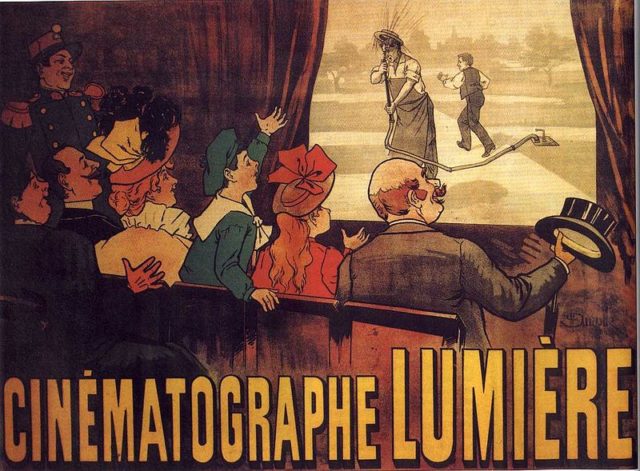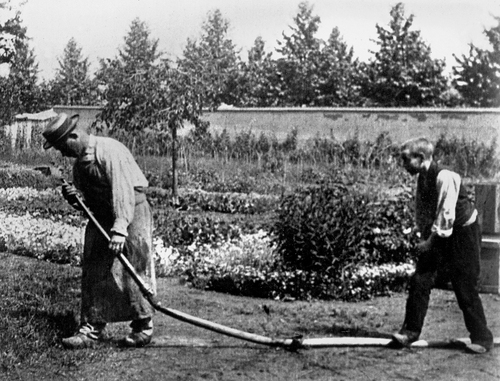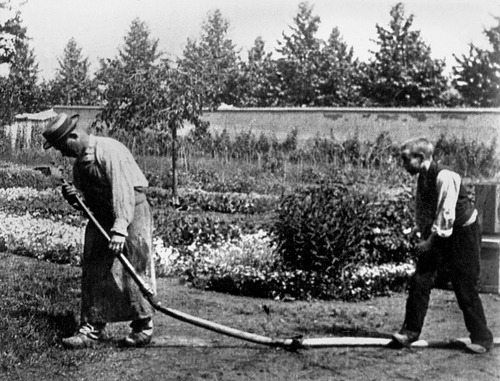L’Arroseur Arrosé or The Sprinkler Sprinkled is a silent comedy film from 1895, produced and directed by the Lumière brothers, Auguste and Louis.
It was the first film to depict a fictional story, as well as the earliest known example of movie comedy. Originally, the film was known as Le Jardinier (in English, The Gardener) or Le Jardinier et le petit espiègle (in English, The Tables Turned on the Gardener and sometimes as The Sprinkler Sprinkled).

The film was shot in Lyon, France in the spring of 1895. It is a simple, practical joke in which a boy harasses a landscape gardener who is watering his plants. The boy steps on the hose that the gardener is using and thereby shuts off the water supply. When the water stops flowing, the gardener tilts the nozzle up to examine it, and the boy takes his foot off the hose, causing the water to spray the gardener. The gardener is stunned, and his hat is knocked off, but he soon realizes what has happened. The boy runs away; a short pursuit follows until the gardener catches the boy. The complete sequence of the film lasts only 45 seconds, but this modest bit of slapstick humor was the predecessor of many comedies.

During the early years of the history of film, the film pioneers, such as the Lumière brothers and Thomas Edison, used cinema’s sheer uniqueness as an invention to entertain the audience. At the time, most films were short footages of everyday events, such as the arrivals of trains. The Lumières took some of the first steps toward descriptive films with L’Arroseur Arrosé, as they were constantly looking for ways to revolutionize their industry that was focused on documentaries for a long time. The audience was quite pleasantly surprised by their scripted comedy.
Read another story from us: This is Charlie Chaplin’s first movie and apparently, he hated it
Utilizing the technology of the time, the Lumières filmed the movie in ‘Cinématographe,’ an all-in-one camera which developed the film and at the same time functioned as its projector. This film, like the rest of Lumière’s first films, it was made in a 35 mm format and a 1.33:1 aspect ratio.
